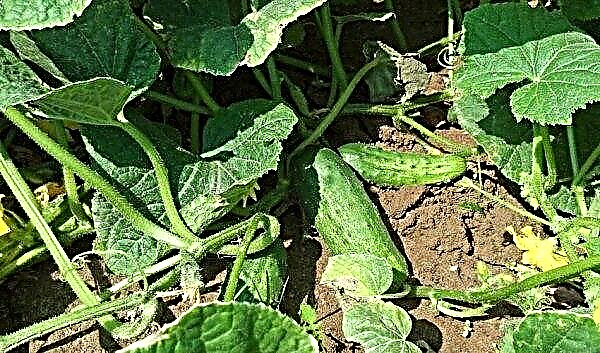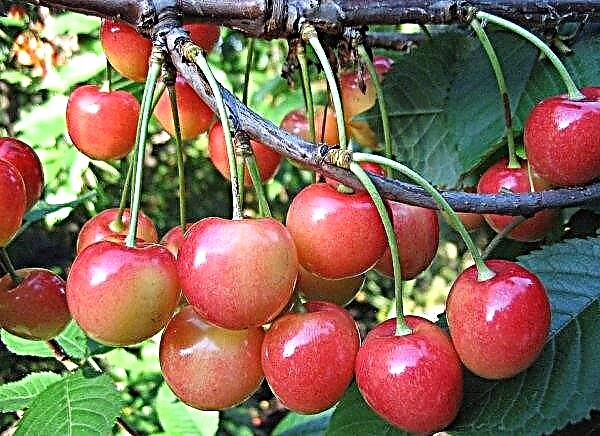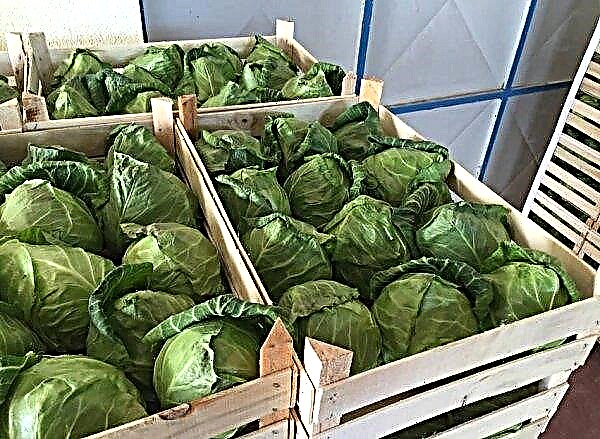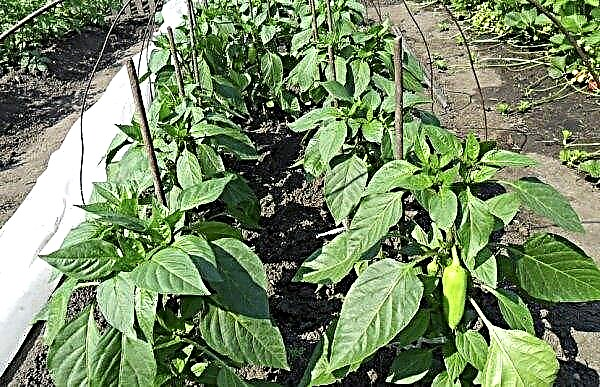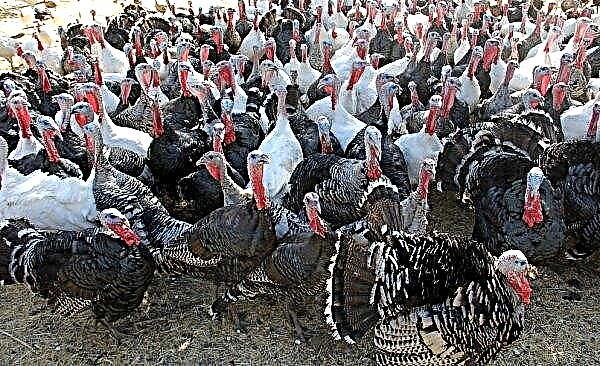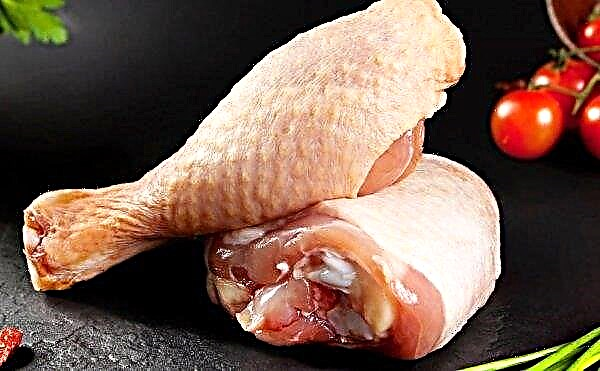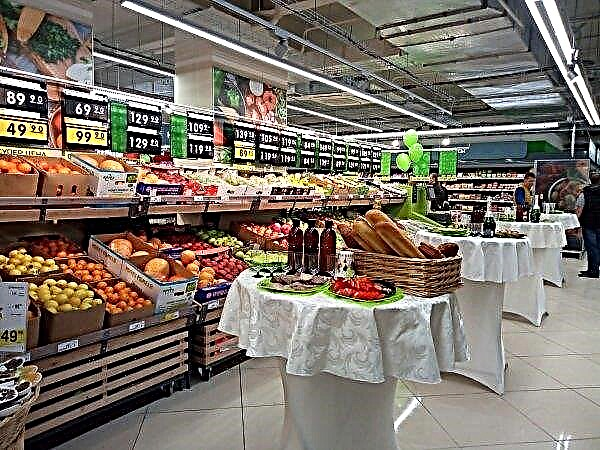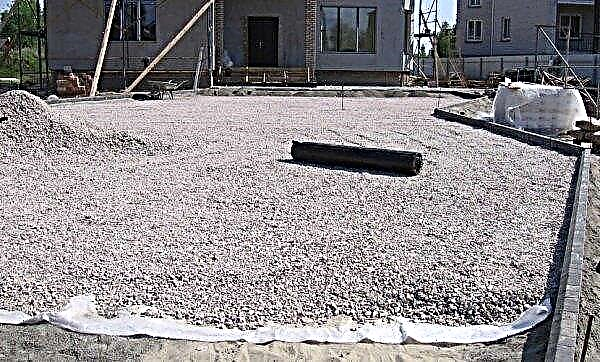Turnip root vegetables are actively used in cooking and, thanks to the rich vitamin and mineral composition, have a number of beneficial effects on the human body. To be able to use a valuable product in the winter, it must be properly stored. Information on how to save a vegetable for a long time so that it does not lose important elements is collected in this article.
What varieties of turnip are better preserved
The vegetable in question has many varieties that differ in color (there are white, yellow, pink), the shape and size of root crops, and the ripening time. If you plan to store root crops until the next harvest, then even at the planting stage, you should choose varieties that are distinguished by the best indicators of keeping quality. These include, but are not limited to:
- Moon;
- Orbit;
- Pull-pull;
- Manchester Market.
Early varieties are not suitable for winter storage. They must be refrigerated and consumed for a month.Did you know? Turnips were cultivated in ancient Egypt and Greece. However, in those days it was considered the food of slaves and the poor. In ancient Rome, a vegetable was in the diet of all segments of the population. More often than not, it was eaten raw, but baked.
 Some varieties of early ripening can be planted 2-3 times per season: the first fruits are harvested in the summer and used until autumn, the second and third crops may be suitable for winter storage. Among such varieties, for example, Snow White, Pink Milan, Geisha, Glasha, Comet, Golden Ball.
Some varieties of early ripening can be planted 2-3 times per season: the first fruits are harvested in the summer and used until autumn, the second and third crops may be suitable for winter storage. Among such varieties, for example, Snow White, Pink Milan, Geisha, Glasha, Comet, Golden Ball.If the varieties of medium ripening are planted in July, then they can also be preserved throughout the winter. These, in particular, include the Nurse, Snow globe, Petrovskaya-1.
How to keep a turnip
There are several ways to store turnip in winter:
- fresh in certain temperature and humidity parameters;
- rolled up in cans - salted, canned, pickled;
- in frozen form;
- in dried form.
Important! The longest stored frozen, canned or dried turnips. Its shelf life is increased to a year.
When to harvest
Late varieties are stored for storage in the last month of autumn. They are delicately removed from the ground so as not to damage the skin. Harvesting must be planned for the day when the weather is dry, and the air in the street warms up to + 8 ... + 10 ° С. Harvesting is carried out by pulling root crops from the soil behind the tops, before that, gently prying them with a shovel or pitchfork.Before placing root crops in the storage, they must be properly prepared for storage, namely: clean from the soil, cut the tops with scissors or a knife, leaving only 1-2 cm from it, cut the tail to 2-3 cm and dry. The fruits also need to be sorted out, discarding too large, soft, damaged, with spots, signs of rot or damage by a fungal infection, frost-bitten.
Harvesting is carried out by pulling root crops from the soil behind the tops, before that, gently prying them with a shovel or pitchfork.Before placing root crops in the storage, they must be properly prepared for storage, namely: clean from the soil, cut the tops with scissors or a knife, leaving only 1-2 cm from it, cut the tail to 2-3 cm and dry. The fruits also need to be sorted out, discarding too large, soft, damaged, with spots, signs of rot or damage by a fungal infection, frost-bitten.
Varieties of medium and early ripening are planted at such times that the harvest fell in mid or late autumn.
Storage conditions
Ideal conditions for storing turnips: temperature - + 1 ... + 4 ° С, humidity - 90–95%, lack of sunlight, good ventilation. With this microclimate, root crops can be stored for 4 months. If the temperature rises, then the shelf life will be shorter.
Did you know? Once in Russia, turnip was the most important and most affordable food product. However, from the XVIII century. it was gradually replaced by potatoes.
Optimal storage locations
Ideal places to store turnips - cellar or basement. A glazed balcony may also be suitable for this purpose. Root crops can be placed for the winter and in apartment conditions, in some darkened and cool place, for example, in the pantry. They can be laid out in boxes and sprinkled with sand, laid with straw or wrapped in parchment. However, this way vegetables will be saved somewhat less in time.
Root crops can be placed for the winter and in apartment conditions, in some darkened and cool place, for example, in the pantry. They can be laid out in boxes and sprinkled with sand, laid with straw or wrapped in parchment. However, this way vegetables will be saved somewhat less in time.
Storage methods
In the basement, root crops are most conveniently stored in wooden crates or in bags filled with sand. Wooden shelves or flooring, barrels, plastic bags are also suitable. Use and clay talker.
In wooden crates
This is the most popular way to store vegetables. Root crops are placed in layers in boxes and sprinkled with wet sand. So that diseases do not develop in the crop, chalk, slaked lime (1 kg / 50 kg of sand) can be added to the sand. Boxes can be installed one on another. Stacks should be up to 2 m high. If there is no sand, then it is allowed to pour the fruits with chalk, ash, sawdust.
Boxes can be installed one on another. Stacks should be up to 2 m high. If there is no sand, then it is allowed to pour the fruits with chalk, ash, sawdust.
In fridge
Fresh product is placed in boxes for fruits and vegetables. Optimum storage temperature is +1 ... + 4 ° С. Shelf life should not exceed 30 days. Periodically, vegetables should be inspected for spoilage.
When stored in plastic bags, it is better to leave them open, and to absorb excess moisture in the middle put a paper towel that needs to be replaced periodically.
Important! Turnip does not absorb odors, so it can be saved along with other vegetables and foods. However, some vegetables can be saturated with the aroma of turnips.
In sandbags
If there is not enough space in the cellar, the root crops can be placed in plastic or fabric bags and sprinkled with moist sand. The bags are installed in an upright position without tying.
How to extend the shelf life of vegetables
To preserve vegetables for as long as possible, until spring, you must adhere to the following recommendations:

- Check that optimal conditions are maintained at the storage location.
- Take away only healthy fruits for storage.
- Store varieties characterized by a long shelf life in storage.
- Regularly check the fruit for damaged specimens that must be removed immediately.
- You can extend the shelf life of root crops in the refrigerator if you put each copy in a plastic bag, paper, newspaper or cling film.

